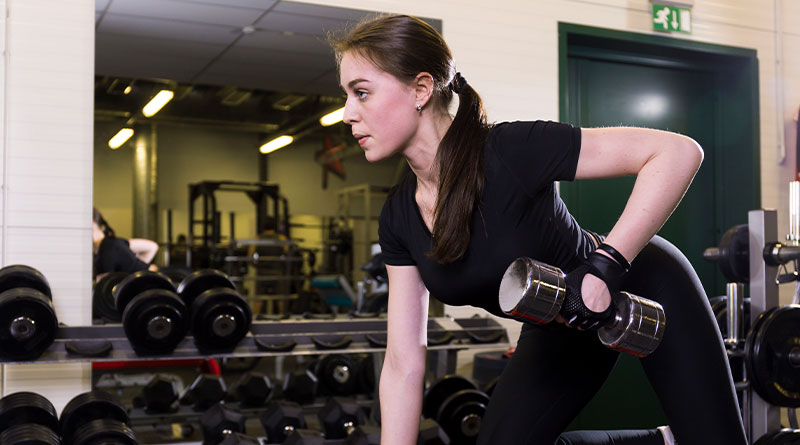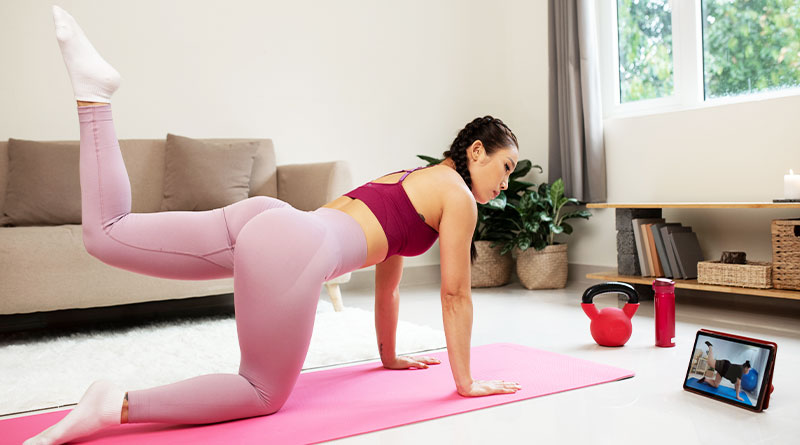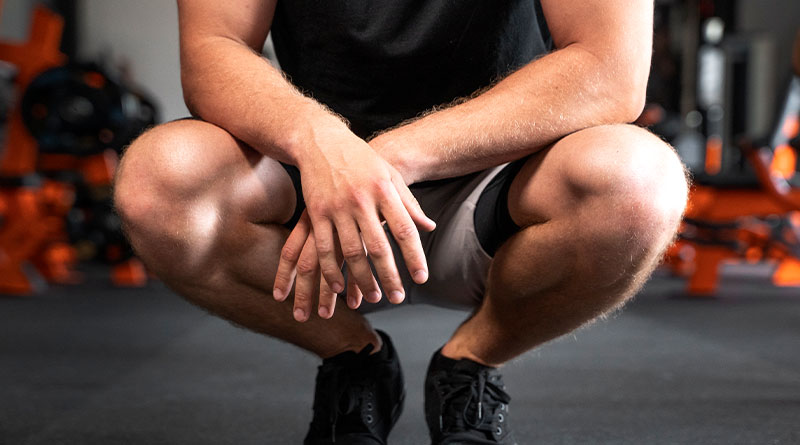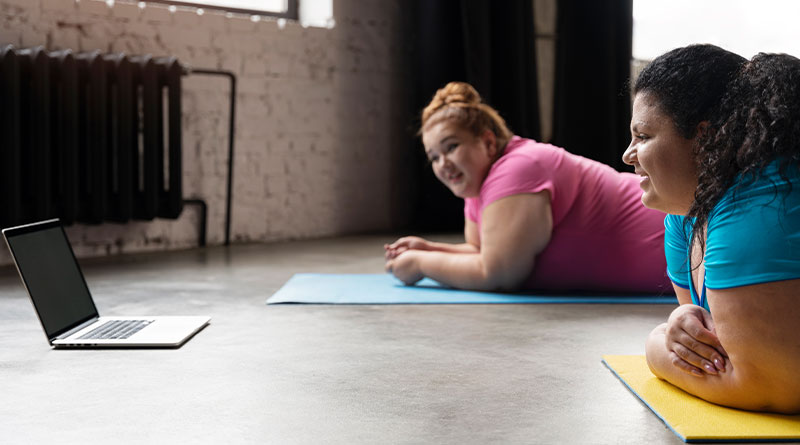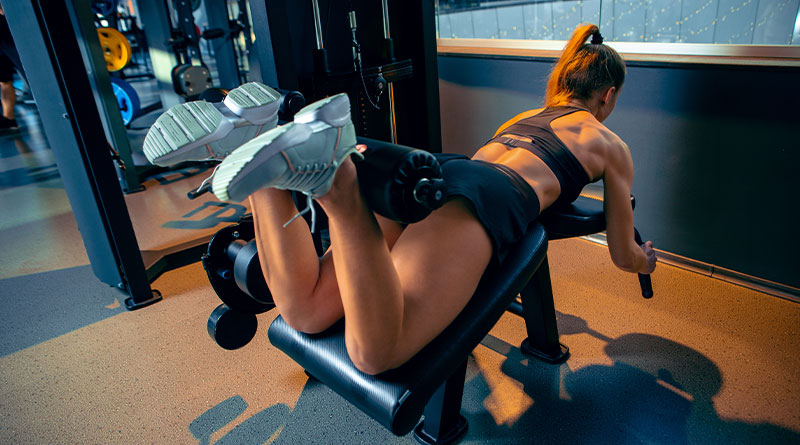If you’re on a quest to sculpt a chest that turns heads, the incline dumbbell press is a game-changer you don’t want to overlook. This compound exercise not only adds depth and definition to your chest but also engages various muscle groups for a comprehensive upper-body workout.
In this blog, we’ll explore the incline dumbbell press, its impeccable benefits, and the muscles it targets.
Mastering the Incline Dumbbell Press
The incline dumbbell press involves lying on an inclined bench and lifting dumbbells with a controlled motion. The angle of the bench targets the upper part of the chest, emphasizing the development of the clavicular head of the pectoralis major.
As a result, this exercise provides a unique and effective way to enhance the overall aesthetics of your chest.
Muscles Worked During Incline Dumbbell Press
Pectoralis Major (Upper Chest)
The primary muscle worked during the incline dumbbell press is the pectoralis major, specifically the clavicular head. This part of the chest is often challenging to target with other chest exercises, making the incline dumbbell press a key player in achieving a well-rounded chest development.
Anterior Deltoids (Front Shoulders)
In addition to the chest, the incline dumbbell press engages the anterior deltoids, contributing to broader shoulders and enhancing the overall upper-body aesthetics. The incline angle puts extra emphasis on the front part of the shoulders, helping you build a balanced and symmetrical physique.
Triceps Brachii
As a compound movement, the incline dumbbell press also recruits the triceps brachii. These muscles play a crucial role in extending your elbow joint during the pressing motion, assisting in the completion of each repetition.
Strengthening your triceps not only contributes to better performance in pressing exercises but also adds definition to your arms.
Serratus Anterior
The incline dumbbell press engages the serratus anterior, often referred to as the “boxer’s muscle.” This muscle, located on the sides of the chest, plays a crucial role in stabilizing the shoulder blades.
Also Check: Best Jiggly Butt Workout
As you press the dumbbells upward on an incline, the serratus anterior activates to maintain scapular stability, contributing to a more controlled and effective pressing motion.
Upper Trapezius
While the primary focus of the incline dumbbell press is on the chest and shoulders, the upper trapezius also comes into play to assist in shoulder elevation and stability.
This engagement helps in maintaining proper posture throughout the exercise, preventing unnecessary strain on the neck and ensuring a balanced activation of the upper body muscles. Strengthening the upper trapezius aids in overall shoulder health and complements the development of surrounding muscle groups.
Perfecting Your Incline Dumbbell Press Form
Executing the incline dumbbell press with proper form is paramount for maximizing its benefits and minimizing the risk of injury. Here are key tips to ensure you’re getting the most out of each rep:
- Bench Angle and Positioning: Adjust the incline bench to around 30 to 45 degrees. This angle effectively targets the upper chest without placing excessive strain on the shoulders. Ensure your back is firmly pressed against the bench, maintaining a natural arch in your lower back.
- Grip and Elbow Position: Hold the dumbbells with a grip that feels comfortable for you, keeping your wrists straight. As you press the weights, focus on maintaining a controlled motion and avoid locking out your elbows at the top of the movement. This not only ensures proper muscle engagement but also reduces unnecessary stress on the joints.
- Breathing Technique: Inhale as you lower the dumbbells to your chest, and exhale as you press them back up. Proper breathing helps stabilize your core and provides the necessary oxygen for your muscles to perform optimally.
- Controlled Descent: Resist the temptation to let the weights drop quickly. Instead, lower the dumbbells in a controlled manner, emphasizing the eccentric phase of the movement. This not only enhances muscle activation but also reduces the risk of injury.
Unlocking the Benefits of Incline Dumbbell Press
- Enhanced Range of Motion: The incline angle of the bench allows for a greater range of motion compared to flat bench presses. This increased range of motion not only stimulates more muscle fibers but also promotes better flexibility and joint health.
- Targeted Upper Chest Development: If you’ve struggled to develop the upper part of your chest, the incline dumbbell press is your solution. This exercise isolates the clavicular head of the pectoralis major, promoting balanced chest development and a more aesthetically pleasing physique.
- Improved Shoulder Strength: Building strong and well-defined shoulders is a key component of a balanced upper body. The incline dumbbell press engages the anterior deltoids, contributing to shoulder strength and stability. This not only enhances your pressing strength but also reduces the risk of shoulder injuries.
Conclusion
Incorporating the incline dumbbell press into your workout routine can be a game-changer for achieving a sculpted and well-defined upper body. By targeting the upper chest, engaging the shoulders, and recruiting the triceps, this exercise provides a comprehensive workout for multiple muscle groups.
As you embrace the incline dumbbell press, you’ll unlock a host of benefits that extend beyond aesthetics, including improved range of motion and enhanced upper-body strength. So, elevate your chest workout and let the incline dumbbell press propel you toward your fitness goals.
Sahil Sachdeva is the Founder of curemedoc.com and a Digital Marketing professional with 6+ years of experience. If you need help in Content writing and want to increase your website ranking, connect with him, as he has some premium websites where you can share blogs with DoFollow links and increase your website’s ranking on Google.

